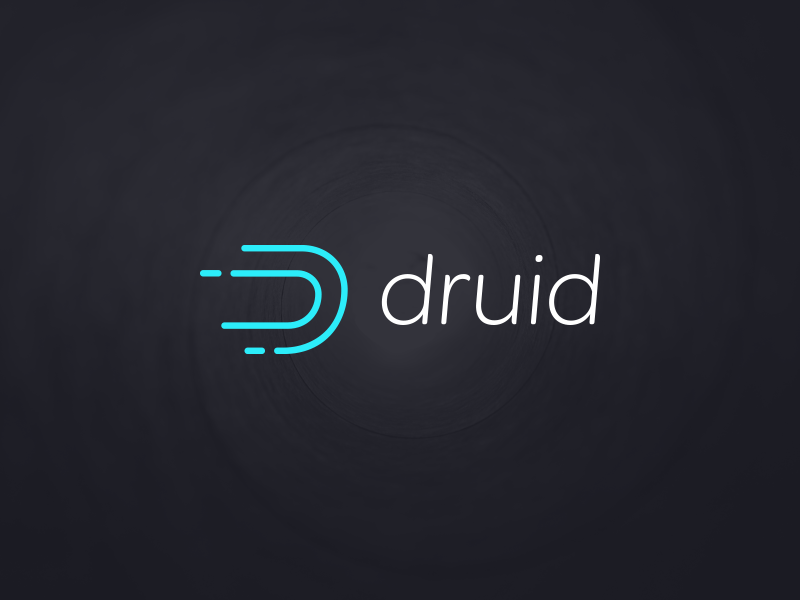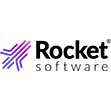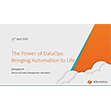

Yahoo is in the process of implementing a big data tool called Druid to power high-speed real-time queries against its massive Hadoop-based data lake. Engineers at the Web giant say the open source database’s combination of speed and usability on fast-moving data make it ideal for the job.
Druid is a column-oriented in-memory OLAP data store that was originally developed more than four years ago by the folks at Metamarkets, a developer of programmatic advertising solutions. The company was struggling to keep the Web-based analytic consoles it provides customers fed with the latest clickstream data using relational tools like Greenplum and NoSQL databases like HBase, so it developed its own distributed database instead.
The core design parameter for Druid was being able to compute drill-downs and roll-ups over a large set of “high dimensional” data comprising billions of events, and to do so in real time, Druid creator, Eric Tschetter wrote in a 2011 blog post introducting Druid. To accomplish this, Tschetter decided that Druid would feature a parallelized, in-memory architecture that scaled out, enabling users to easily add more memory as needed.
Druid essentially maps the data to memory as it arrives, compresses it into a column, and then builds indexes for each column. It also maintains two separate subsystems: a read-optimized subsystem in the historical nodes, and a write-optimized subsystem in real-time nodes (hence the name “Druid,” a shape-shifting character common in role playing games). This approach lets  the database query very large amounts of historical and real-time data, says Tschetter, who left Metamarkets to join Yahoo in late 2014.
the database query very large amounts of historical and real-time data, says Tschetter, who left Metamarkets to join Yahoo in late 2014.
“Druid’s power resides in providing users fast, arbitrarily deep exploration of large-scale transaction data,” Tschetter writes. “Queries over billions of rows, that previously took minutes or hours to run, can now be investigated directly with sub-second response times.”
Metamarkets released Druid as an open source project on GitHub in October 2012. Since then, the software has been used by a number of companies for various purposes, including as a video network monitoring, operations monitoring, and online advertising analytics platform, according to a 2014 white paper.
Netflix was one of the early companies testing Druid, but it’s unclear if it implemented it into production. One company that has adopted Druid is Yahoo, the ancestral home of Hadoop. Yahoo is now using Druid to power a variety of real-time analytic interfaces, including executive-level dashboards and customer-facing analytics, according to a post last week on the Yahoo Engineering blog.
Yahoo engineers explain Druid in this manner:
“The architecture blends traditional search infrastructure with database technologies and has parallels to other closed-source systems like Google’s Dremel, Powerdrill and Mesa. Druid excels at finding exactly what it needs to scan for a query, and was built for fast aggregations over arbitrary slice-and-diced data. Combined with its high availability characteristics, and support for multi-tenant query workloads, Druid is ideal for powering interactive, user-facing, analytic applications.”
Yahoo landed on Druid after attempting to build its data applications using various infrastructure pieces, including H adoop and Hive, relational databases, key/value stores, Spark and Shark, Impala, and many others. “The solutions each have their strengths,” Yahoo wrote, “but none of them seemed to support the full set of requirements that we had,” which included adhoc slice and dice, scaling to tens of billions of events a day, and ingestion of data in real-time.
adoop and Hive, relational databases, key/value stores, Spark and Shark, Impala, and many others. “The solutions each have their strengths,” Yahoo wrote, “but none of them seemed to support the full set of requirements that we had,” which included adhoc slice and dice, scaling to tens of billions of events a day, and ingestion of data in real-time.
Another property of Druid that caught Yahoo’s eye was its “lock-free, streaming ingestion capabilities.” The capability to work with open source big data messages busses, like Kafka, as well as working with proprietary systems, means it fits nicely into its stack, Yahoo said. “Events can be explored milliseconds after they occur while providing a single consolidated view of both real-time events and historical events that occurred years in the past,” the company writes.
As it does for all open source products that it finds useful, Yahoo is investing in Druid. For more info, see the Druid website at http://druid.io.
Related Items:
The Real-Time Future of Data According to Jay Kreps
Glimpsing Hadoop’s Real-Time Analytic Future
Druid Summons Strength in Real-Time
September 5, 2025
September 4, 2025
- Google Cloud: 52% of Executives Say Their Organizations Have Deployed AI Agents, Unlocking a New Wave of Business Value
- Geniez AI Raises $6M Seed Funding to Connect LLMs and AI Agents to the Mainframe
- Neo4j Launches Infinigraph: The Most Scalable Graph Database for Unified Operational and Analytical Workloads at 100TB+ Scale
- Giga Computing Expands NVIDIA RTX PRO Server Portfolio
- Starburst Announces AI & Datanova 2025, the Global Virtual Summit for Trino, Data and AI Innovation
- Dresner Advisory Publishes 2025 AI, Data Science, Machine Learning, and ModelOps Research
- Cisco Expands Secure AI Factory with NVIDIA to Accelerate Enterprise RAG Workloads
- Butterflies and Conservation: Largest AI Dataset Now Released
September 3, 2025
- Fivetran Acquires Tobiko Data to Power the Next Generation of Advanced, AI-Ready Data Transformation
- DeepL Unveils Autonomous AI Agent for Businesses
- SQL4Fusion Launches as Community and SQL Editor for Oracle Fusion Developers
- Leonardo DiCaprio Pens Foreword to Data at the Edge, a Five-Book Series on Finding Trusted GIS Data
- Precisely Unveils AI Agents and Copilot for the Data Integrity Suite
- WisdomAI Launches Proactive Agents: The Always-On AI Data Analyst That Augments Your Team
- Polars Cloud Now Available on AWS
September 2, 2025
- John Snow Labs Announces Program and Keynote Speakers for the Applied AI Summit
- Siemens and Snowflake Enable IT/OT Convergence Across Cloud for Industrial Customers
- SDSC’s Sherlock Partners with MCNC to Deliver Secure Cloud and Data Services Across North Carolina
- Cloudsmith Launches ML Model Registry to Bring Enterprise Governance and Security to Models and Datasets
- Why Metadata Is the New Interface Between IT and AI
- Beyond Words: Battle for Semantic Layer Supremacy Heats Up
- What Are Reasoning Models and Why You Should Care
- Why OpenAI’s New Open Weight Models Are a Big Deal
- Rethinking Risk: The Role of Selective Retrieval in Data Lake Strategies
- Software-Defined Storage: Your Hidden Superpower for AI, Data Modernization Success
- This Big Data Lesson Applies to AI
- The AI Beatings Will Continue Until Data Improves
- What Is MosaicML, and Why Is Databricks Buying It For $1.3B?
- Top-Down or Bottom-Up Data Model Design: Which is Best?
- More Features…
- Mathematica Helps Crack Zodiac Killer’s Code
- GigaOm Rates the Object Stores
- Solidigm Celebrates World’s Largest SSD with ‘122 Day’
- Google Pushes AI Agents Into Everyday Data Tasks
- Oracle Launches Exadata Service for AI, Compliance, and Location-Critical Workloads
- BigDATAwire Exclusive Interview: DataPelago CEO on Launching the Spark Accelerator
- The Top Five Data Labeling Firms According to Everest Group
- Databricks Now Worth $100B. Will It Reach $1T?
- AI Hype Cycle: Gartner Charts the Rise of Agents, ModelOps, Synthetic Data, and AI Engineering
- EU’s AI Act Enters New Enforcement Phase
- More News In Brief…
- Seagate Unveils IronWolf Pro 24TB Hard Drive for SMBs and Enterprises
- Gartner Predicts 40% of Generative AI Solutions Will Be Multimodal By 2027
- LF AI & Data Foundation Hosts Vortex Project to Power High Performance Data Access for AI and Analytics
- Dell Unveils Updates to Dell AI Data Platform
- Deloitte Survey Finds AI Use and Tech Investments Top Priorities for Private Companies in 2024
- Computing Community Consortium Outlines Roadmap for Long-Term AI Research
- Transcend Expands ‘Do Not Train’ and Deep Deletion to Power Responsible AI at Scale for B2B AI Companies
- Acceldata Announces General Availability of Agentic Data Management
- Redpanda Partners with Databricks to Deliver One‑Step Stream‑to‑Table Iceberg Integration for Real‑Time Lakehouses
- NVIDIA AI Foundry Builds Custom Llama 3.1 Generative AI Models for the World’s Enterprises
- More This Just In…







































